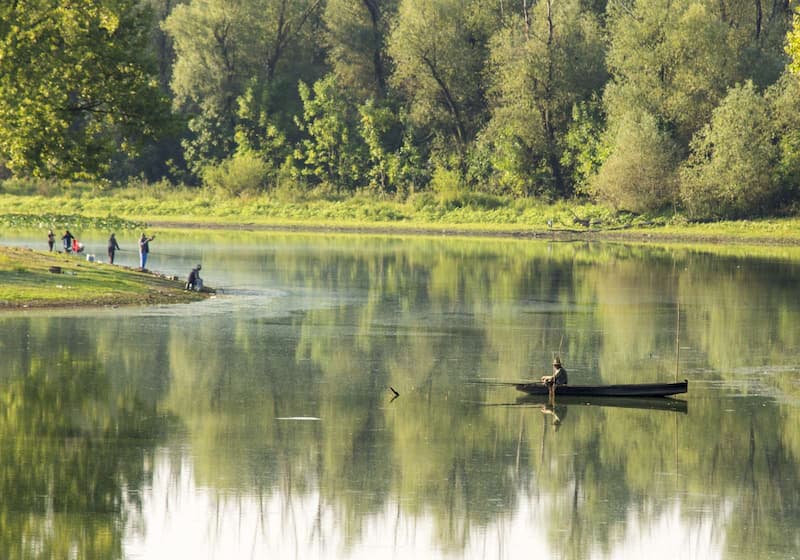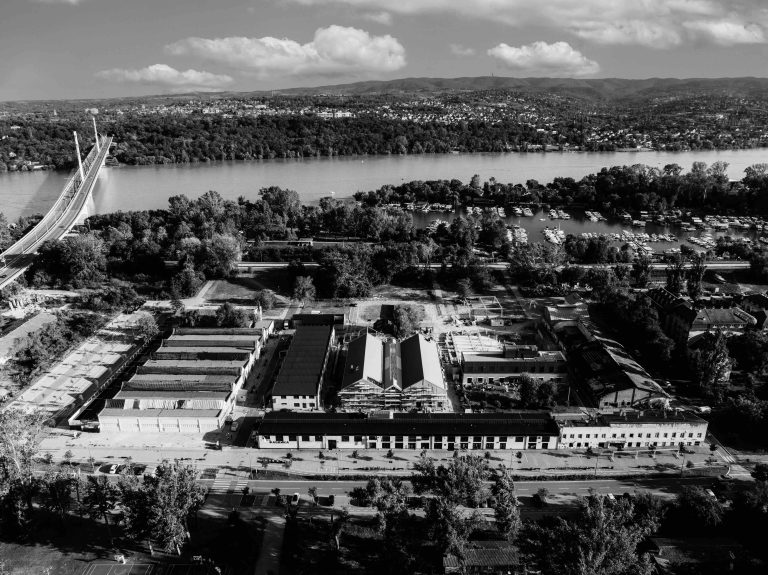Two Kovilj Municipalities at the End of the World
We do not know why not one, but two Kovilj municipalities – Lower and Upper were formed’ at the end of the world’, in the 13th century. At the time, the name for these settlements was the Hungarian Kabol, which has no meaning in Serbian. The Serbian name Kovilj is said to have something to do with a perennial sod plant from the grass family, called kovilje, which must have grown here. In the past, the only road connection with Kovilj was the medieval trade route from Petrovaradin to Titel. The first written mention of Kovilj comes from the 13th century, from the time of the Arpads. During the Turkish rule, Evliya Çelebi, passing through Kovilj, wrote in 1665, ‘it had 200 houses and that it had a fortification. Dizdar (city elder) kept 50 crew members. There were four Muslim places of worship in Kovilj at that time.’ Since 1745, Kovilj has belonged to the Potisje military border, and since 1769 it has been part of the Šajkaš Battalion, where it will remain until its abolition in 1873. In the Habsburg Monarchy, there were two Kovilj municipalities – Lower and Upper Kovilj, although it had been one place for a long time, and the border ran along the street. The lower one was called Šanac, after the former fortification. These two Kovilj merged in 1870.
Trademarks of Kovilj
Today, Kovilj is known for Mulberry brandy, to which the ‘Parastos Dudu’ (En. Memorial Service for Maulberry) event is dedicated, for ‘Fijakerijada’ (En. Carriage Parade), for the old bakery where bread is still made the old way, and for the blacksmith’s shop where a woman was an apprentice, for the largest nest of storks in the Balkans and one of the largest nests of swans. Kovilj is the place with the largest number of storks in our country. Storks walk on the roofs and build large nests on almost every lamp post. Storks are loyal to Kovilj, because they get quality food there, thanks to the wealth of the Kovilj marshes, and because the people of Kovilj take care of them.

Birthplace of Laza Kostić
The most famous resident of Kovilj is the famous Laza Kostić, poet of Serbian romanticism, Doctor of Law, journalist, polyglot, founder of sports clubs, playwright and many other things. The park and the main street in Kovilj, where the poet’s birthplace is located, are named after him. There is a commemorative plaque on the house, but it cannot be entered. The museum named after Laza Kostić is located in the main street, at number 102. It is actually the family house of the professor of Physics, Petar Viđikant, who wished to contribute to the tourist development of the place. The monument in Laza Kostić Park, in front of the Gornjokoviljska Church and the birthplace of the poet, was erected in 1824 and dedicated to the people of Kovilj who, as volunteers, died in World War I. The monument is almost four meters high and built with bricks in concrete. Among the Kovilj veterans is Jovan Rajić, one of the founders of critical historiography among Serbs, pedagogue and archimandrite of the Kovilj monastery, who is also buried here. His memorial museum is located right in the monastery. Another resident of Kovilj, Stevan Pešić, became famous for his travelogues from Nepal, Tibet and Sri Lanka.
The Kovilj Monastery
Next to Kovilj is the famous Kovilj Monastery. This Serbian shrine is a cultural monument under state protection since 1949. According to tradition, Saint Sava reconciled the Hungarian king Andrew II with his brother Stefan the First-Crowned in 1220 and at the place where peace was made, Sava built a log church. In that place today is the Kovilj Monastery, which is dedicated to the Holy Archangels Michael and Gabriel, who are celebrated on 26 July. It was modeled after Manasija monastery. The monastery property is huge, and only one small part is open for visits. Today, the Kovilj Monastery is a spiritual refuge for a large number of people. Almost half of the monks are highly educated, and how hardworking they are is clear from the fact that the monastery is famous for the production of rakija, cognac, wine and walnut and honey liqueur. Next to the monastery is the chapel of Saint Petka, called Petkovica. An old oak has grown into it, and there is a nest on it, to which storks return every year. No one knows how old that oak is, but everyone knows that it is the oldest stork nest in the Balkans.

Two Orthodox Churches
There are two Serbian Orthodox churches in Kovilj. The Church of the Ascension of the Lord (Gornjokoviljska) was built between 1824 and 1829, and the iconostasis was painted by Rafailo Momčilović. The Church of St. Thomas the Apostle (Donjokoviljska) was built in 1845, on the site of the old church, demolished in 1837. The iconostasis was made by Anton Krel, according to the works by Uroš Predić.
The Famous Csárda
There is a csárda called ‘At the end of the world’. You cannot go anywhere further from it, because wherever you go through the impassable swamps and backwaters of the Danube, you end up back again, at the csárda. In order to reach it, you should head towards a backwater of the Danube, called Arkanj, within the Kovilj-Petrovaradin Marshes. The flora and fauna of the place is extremely rich. The csárda itself is located on a hill, from where you can take steps down to the water. People come here to eat good fish stew or fish stew with homemade noodles, Vojvodina strudel with poppy seeds or baklava with cherries, to drink good wine and Mulberry brandy. In an enclosed area, children can interact with a donkey, sheep and small ponies. Those who wish to row can sail the green Arkanj in a rented boat. Today’s csárda has been renovated and decorated. It is located in the place where there used to be an old csárda, where many bohemians met the morning, and they say that Mika Antić once went to his home in Kovilj on foot, because someone hid his bicycle. The csárda was visited not only by bohemians, but also by ambassadors, delegations of world officials, and the people of Kovilj say that the famous cosmonaut Gagarin also visited it.

Did you know that the people of Kovilj had the first association of liars in the former Yugoslavia? One of their stories, which is still retold, tells how a man’s horses with a plow ran away while he was plowing a field, so the man chased them all the way to the Danube, but he did not reach them, and they crossed the Danube to Karlovci. Even today, ships hiccup where the plow cultivated the Danube.
A Place with Soul and Natural Beauty
There are many interesting stories about this place. Allegedly, a James Bond character was formed after one resident of Kovilj. They say that Kovilj does not have a railway, because the inhabitants gave up trains in order not to frighten the horses. And indeed, the boys here on horses are chasing Christmas. On Sundays, horses and carriages are brought out for the owners to show off and take a ride around the village. The people of Kovilj have the Šajkaš football club, one of the oldest in the world, since it was founded in 1908. Kovilj is a paradise for fishermen, because the marsh is the largest natural breeding ground for fish. Fishing is done on Šlajz, Tikvara, Arkanj. The nature of this area is protected as a special nature reserve, which speaks volumes for its beauty.
Isn’t all of the above enough to head to Kovilj and discover its charms ‘Between dreams and reality’?
Author: Ljiljana Dragosavljević Savin, MA Historian







